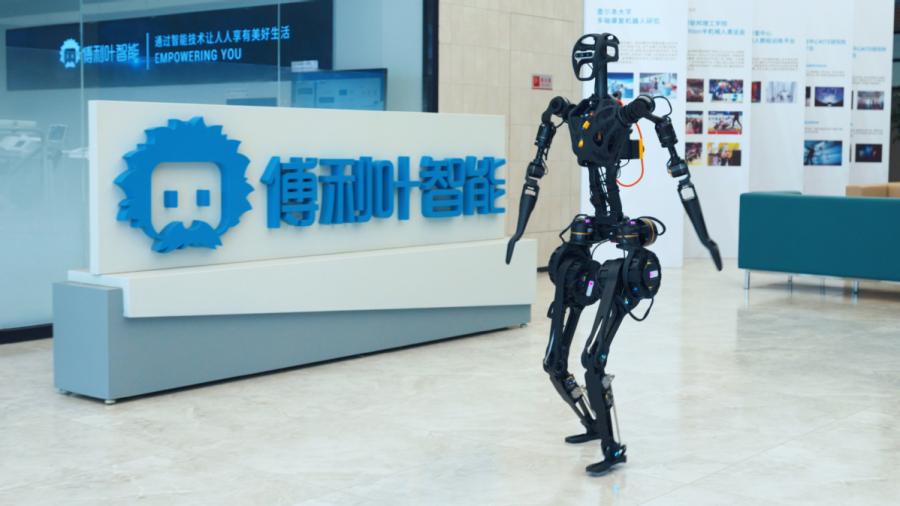 Standing 1.65 meters tall and weighing 55 kg, the robot, named GR-1, is able to walk at 5 km per hour and carry a load of up to 50 kg. [Photo/Fourier Intelligence]
Standing 1.65 meters tall and weighing 55 kg, the robot, named GR-1, is able to walk at 5 km per hour and carry a load of up to 50 kg. [Photo/Fourier Intelligence]
Digital technologies such as robotics and artificial intelligence took center stage as the 2024 Design Intelligence Award (DIA) was unveiled last Friday in Hangzhou, Zhejiang province.
Fourier GR-1, a humanoid robot developed by Shanghai-based Fourier, a general-purpose robotics company, ultimately claimed the grand award, the highest honor at the DIA.
Being one of the world’s first batch of mass-produced humanoid robots, Fourier GR-1 is known for human-like degrees of freedom, with a versatile body structure and advanced motion control, powered by 54 joints and built-in emotional systems.
According to the DIA, Fourier GR-1 won the prize for “its integration of bionics and high-performance robotics technology”, which has given it a human-like sense of life and it is endowed with huge potential.
With 39 candidates making into the finals, this year’s DIA received over 8,000 entries from 47 countries and regions around the world, covering cutting-edge technologies including AI, brain-computer interface, virtual reality and new materials, said Han Xu, vice-president of the China Academy of Art (CAA) and president of the organizing committee.
“The entries have smartly combined innovative ideas with practical applications to boost the burgeoning development of emerging industries such as low-altitude economy, digital cultural tourism and humanoid machines,” said Han.
“They are helping drive the comprehensive reconstruction and upgrading of the global supply chain, innovation chain and value chain, showing the far-reaching impact of design intelligence on a global scale,” Han added.
Jointly launched by the Zhejiang provincial government and the CAA in 2015, the annual DIA is China’s first international academic competition in industrial design and has grown to become one of the most influential industrial design competitions in and outside of China.
“Many designs for this year’s competition have emerged where new technologies have integrated with design to create new value,” said Cha Kang-Heui, vice-president of a federation of design associations in South Korea.
For example, the aH-1 helmet, an inflatable and micro-collapsible bicycle helmet — designed by United Kingdom-based Ventete that won one of the DIA gold awards — uses pressurized air instead of foam for protection, marking the first significant departure from traditional materials in half a century.
Another gold-award winning entry — “Digital Central Axis-Microcosm” — developed by Chinese tech giant Tencent, offers users an immersive online experience of Beijing’s Central Axis, a UNESCO World Heritage Site, through a combination of digital capabilities and game technologies.
“Cultural innovation in China often takes the traditions of the country’s cultural expression, and brings them to a new generation,” said Joseph Press, vice-dean of NACAA, the first Chinese-French design institute created by L’Ecole de design Nantes Atlantique and the CAA.
By going into the roots of Chinese culture and by leveraging its strength, China’s cultural innovation also brings them to the rest of the world, Press said.
,https://english.shanghai.gov.cn/en-Latest-WhatsNew/20241211/487480d1c2f7494aa9a03f9054f40452.html
